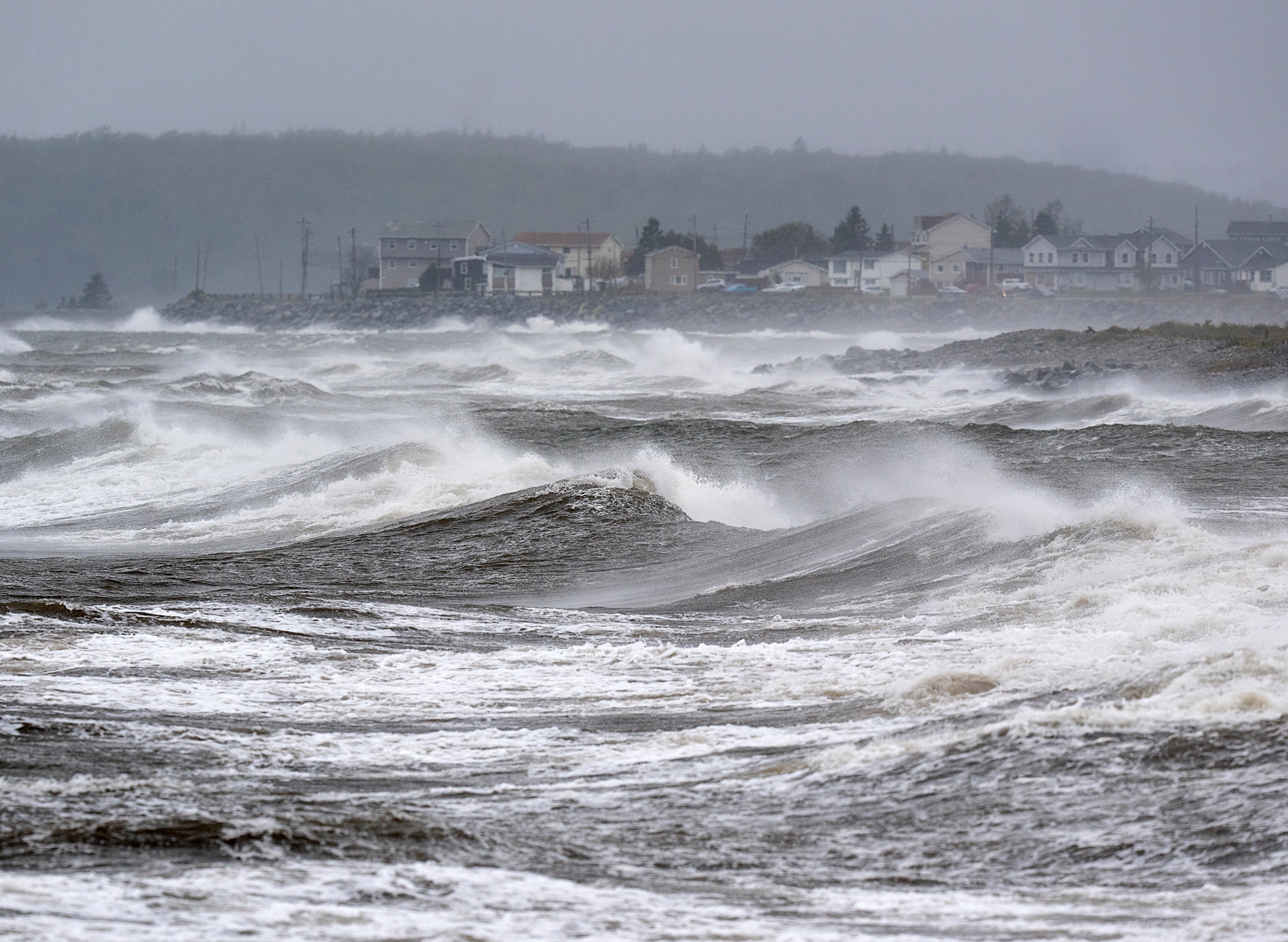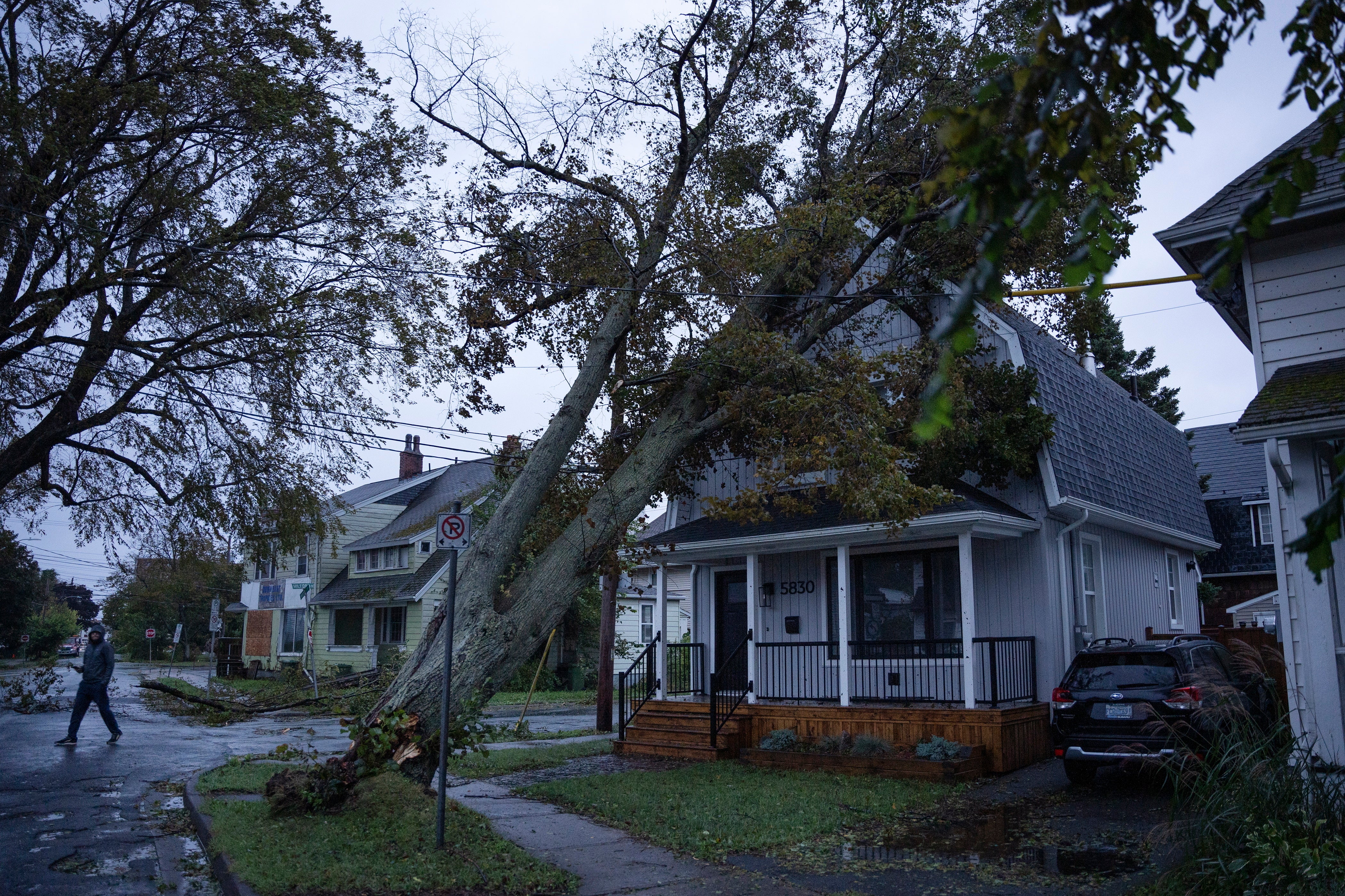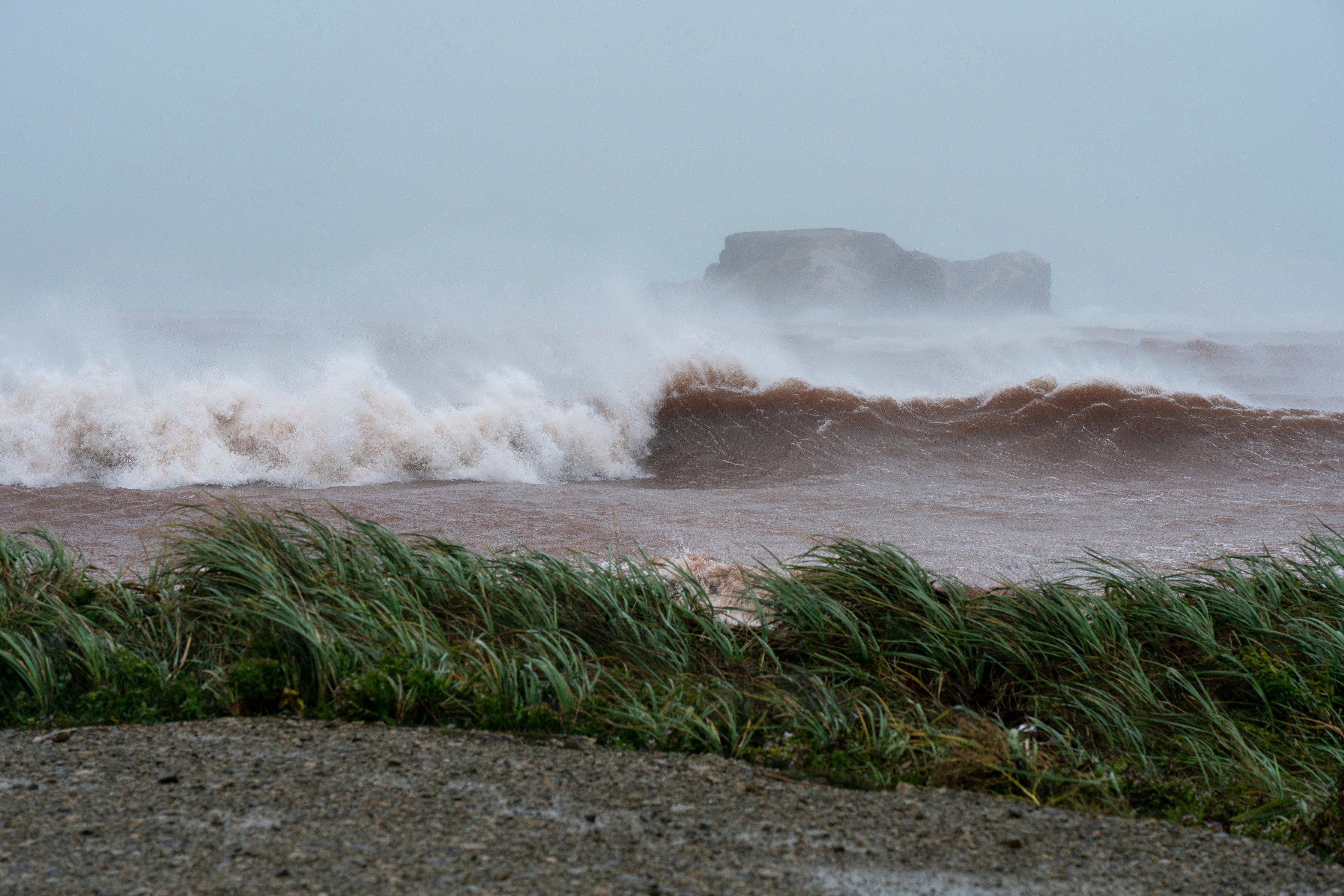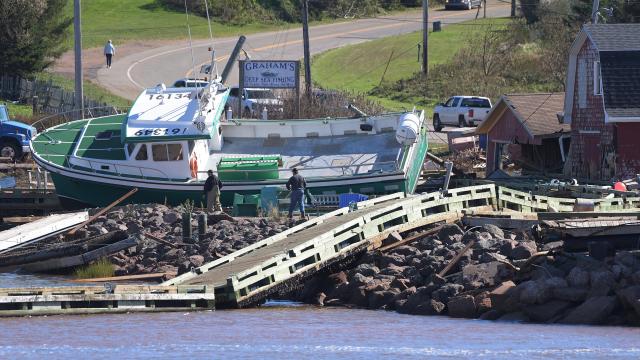Parts of Canada’s Atlantic coast are reeling after being battered by one of the most powerful storms to hit the country in history. Post-tropical cyclone Fiona swept through the province of Nova Scotia and parts of New Brunswick this weekend, killing at least one person and causing homes to collapse and widespread flooding and power outages.
One of the Strongest Storms in Canada’s History

After charging up the Atlantic, Fiona made landfall in Canada early Saturday morning, hitting the coast of Nova Scotia between the remote towns of Canso and Guysborough. The unofficial recorded pressure of the storm as it made landfall was 931.6 millibars — possibly making it the lowest pressure storm to ever hit Canada, the Canadian Hurricane Centre said on Twitter Saturday. In storms, lower pressure creates ideal conditions for high wind speeds, making them more powerful and more destructive.
Storm Came From Trail of Destruction

Fiona formed as a tropical depression over the Atlantic Ocean on September 15 and charted a course of destruction northwards. After intensifying to a Category 1 hurricane, the storm barraged through Puerto Rico last weekend, leaving hundreds of thousands of people on the island without power or clean water. Of the more than 1,462,000 customers on the island, more than 619,000 remained without power as of Monday, more than a week after the storm hit, according to PowerOutage.us. At least five deaths have been reported in Puerto Rico, the Dominican Republic, and Guadeloupe as a result of the storm.
Damaging Winds, Waves, and Rain

Fiona made landfall with sustained wind speeds of 265 kilometres per hour, according to the Canadian Hurricane Centre, bringing with it “damaging winds, torrential rainfall, large waves and destructive storm surge.” As Fiona hit the coast of Nova Scotia, it brought waves between 5 to 8 metres; reports from a buoy off the coast recorded wave peaks nearly 30 metres tall. By Sunday, Fiona had downgraded to a post-tropical storm but still generated strong wind gusts and storm conditions as it moved over Quebec and Labrador.
Widespread Destruction

Fiona has to date claimed one life in Canada: a 73-year-old woman who was inside her home on the coast when a wave struck the house and destroyed part of the basement. Another woman had to be rescued in the coastal town of Channel-Port Aux Basques after a wave destroyed her home and took her out to sea. At least 100 people had to be evacuated in Halifax, the capital of Nova Scotia, after winds took out the roof of an apartment building.
‘Rubble Floating All Over the Place’

Shocking eyewitness accounts of Fiona’s damage spread around social media this weekend, as residents observed downed trees, destroyed buildings, and damaging floodwaters.
“I’m seeing homes in the ocean,” René J. Roy, who lives in Channel-Port Aux Basques and is an editor at local news outlet Wreckhouse Press, told USA Today. “I’m seeing rubble floating all over the place. It’s complete and utter destruction. There’s an apartment that is gone, that is literally just rubble.”
Tens of Thousands Still Without Power

The storm was especially damaging to the region’s power supply. As of Monday morning, more than 187,000 customers in Nova Scotia were still without power, according to PowerOutage.com, which tracks power supply across Canada. On Prince Edward Island, more than 77,000 customers of the 99,000 tracked by PowerOutage.com also had no power on Monday.
Climate Change Making Storms More Common

As the world continues to warm, destructive storms like Fiona are only going to become more common. Hotter ocean temperatures can help hurricanes like Fiona get even stronger than they normally would be, while warmer air can hold more rainfall, making storms and flooding more intense. Unchecked sea level rise also means that storm surge near coastal towns like the ones hit in Nova Scotia is getting more aggressive and damaging with storms like these.
